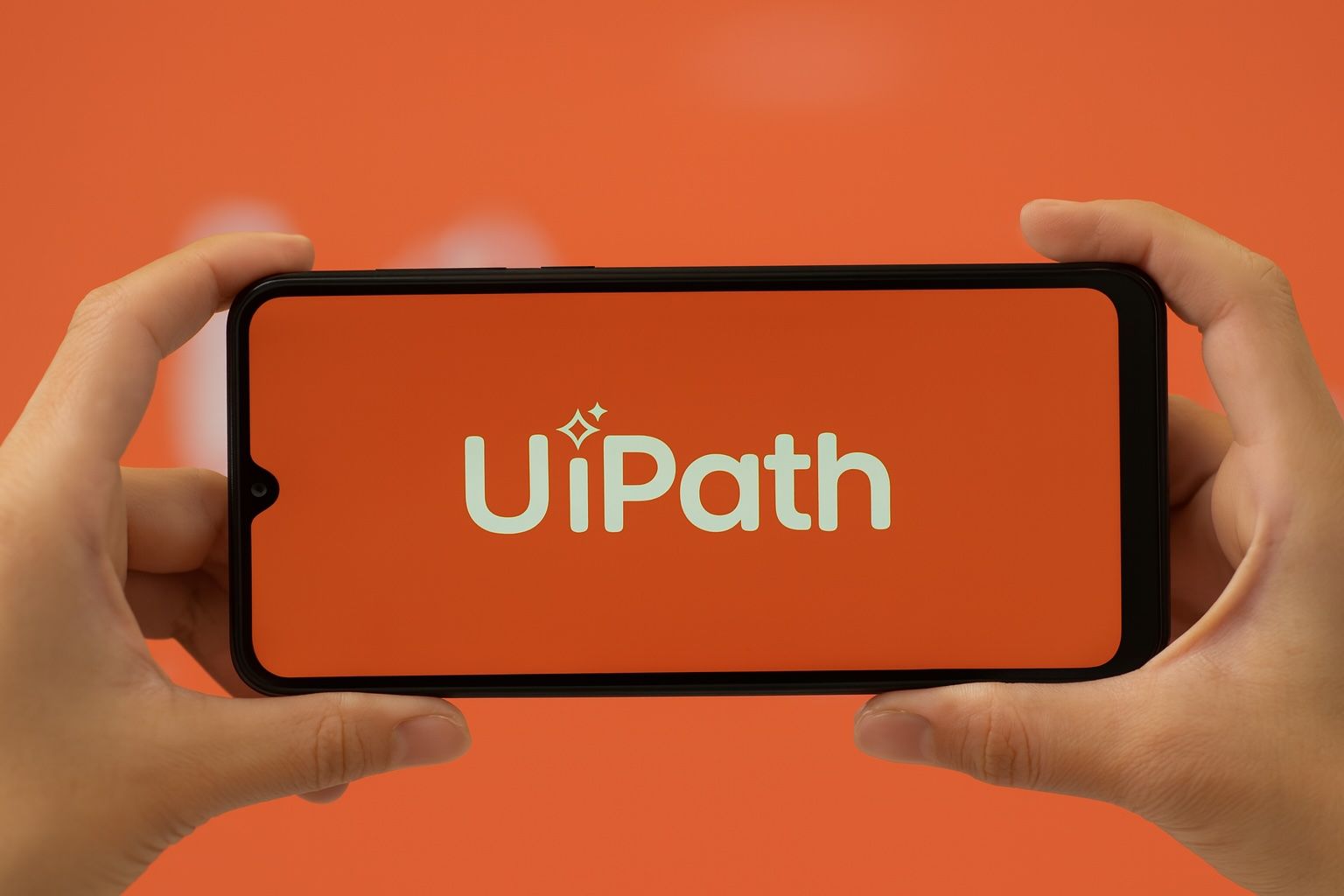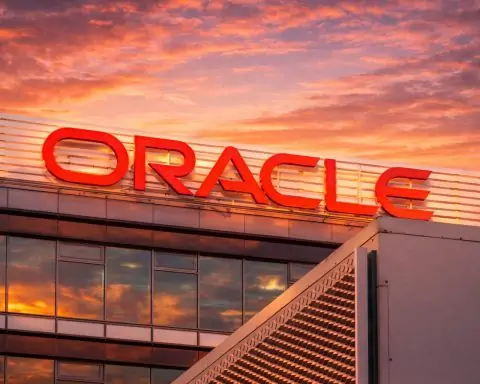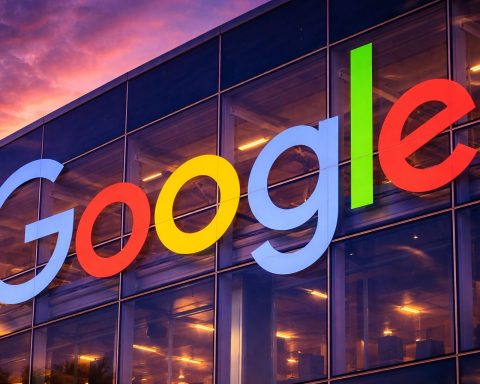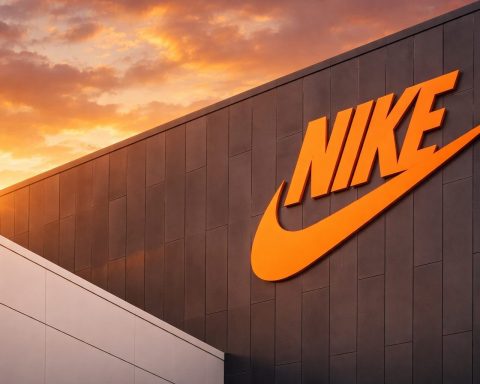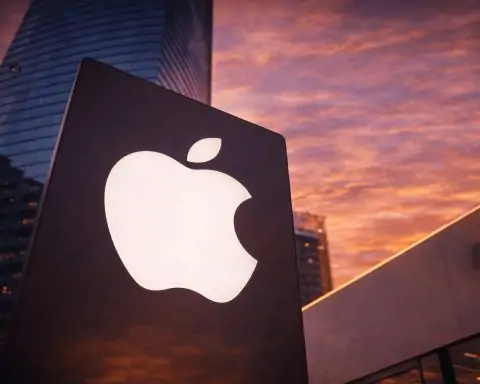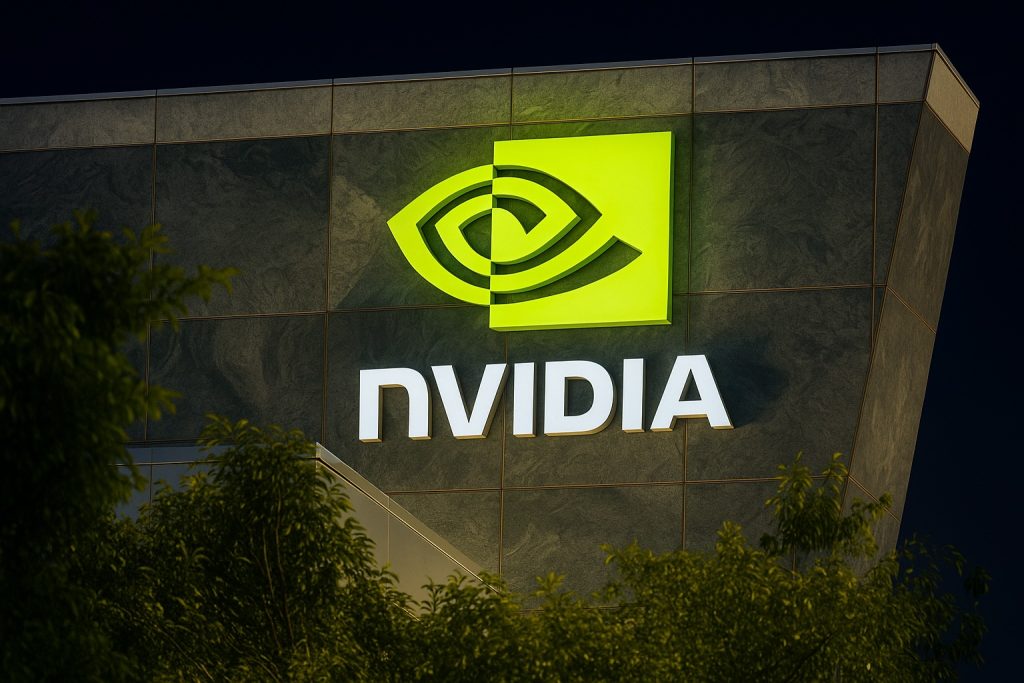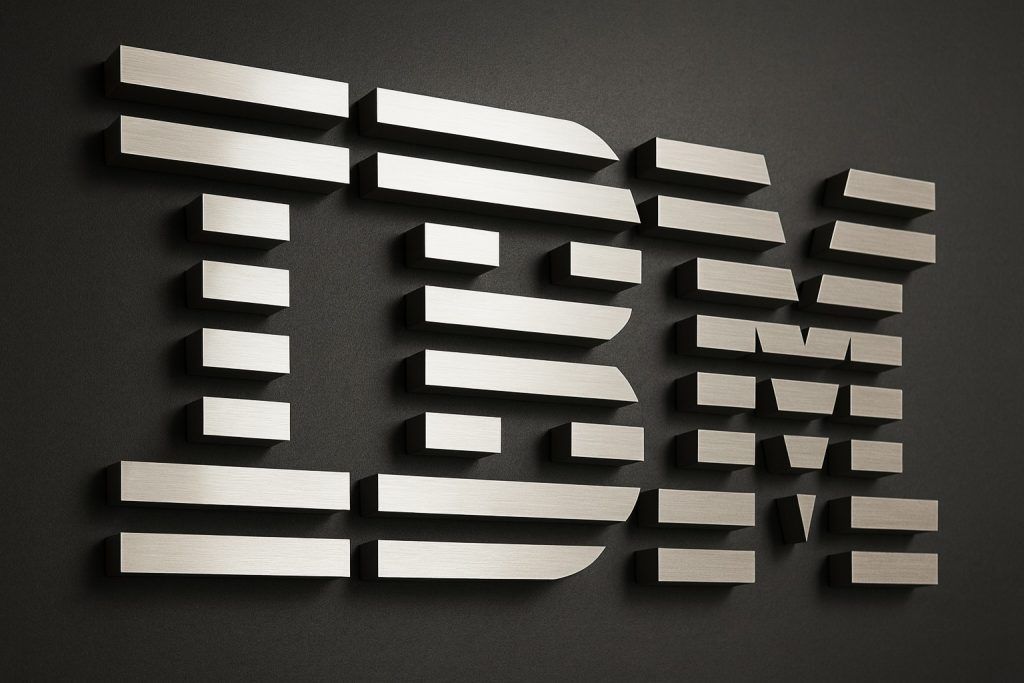UiPath Inc.’s emphasis on new AI partnerships and products has fueled a stock rally in late 2025.
- Stock Rally on AI News: UiPath’s stock (NYSE: PATH) recently surged after unveiling major AI partnerships, jumping from about $12.56 to a pre-market high of $15.18 (+21% intraday) on September 30 [1]. It closed that day up ~6.5% at $13.38, and as of October 6, 2025 trades around the mid-$13 range – near its 52-week high (~$16) reached in late September [2]. Shares had dipped to the $9–$10 range over the summer amid macroeconomic worries, but have rebounded sharply on upbeat earnings and AI momentum [3].
- Strong Earnings & Turnaround: The company’s latest quarterly results beat expectations, with revenue up 14% and a swing to a small GAAP profit [4] [5]. Annual Recurring Revenue (ARR) grew 11% to $1.723 billion and free cash flow hit $45 million [6]. Management raised full-year guidance and noted “improved execution” and growing demand for its AI-powered platform [7]. Analysts note UiPath achieved this profit turnaround by cutting costs ~$40M while adding ~$45M in revenue – “an $85 million swing” – a sign it may finally sustain profitability [8].
- AI Partnerships Ignite Optimism: At its late-Sept FUSION event, UiPath announced high-profile collaborations with OpenAI, Google, NVIDIA, and Snowflake to embed cutting-edge generative AI into its automation platform [9]. These include a ChatGPT connector with OpenAI, voice-activated automation using Google’s Gemini AI, on-premise AI model integration with NVIDIA for regulated industries, and data-cloud integration with Snowflake’s Cortex AI [10]. The deals position UiPath as an emerging hub in the enterprise AI ecosystem, beyond its RPA roots [11].
- Cautious Analyst Outlook: Wall Street is cautiously optimistic. Consensus rating: “Hold” with an average 12-month price target around $13.3 (≈5–8% upside) [12]. Price targets span from ~$10 (bearish) to $18 (bullish) [13], reflecting debate on how fast AI initiatives will pay off. Morgan Stanley recently raised its target from $12 to $15 (Equal-weight) citing higher AI-driven growth potential [14], while DA Davidson holds at $12 (Neutral), saying it needs “more consistent execution” before turning bullish [15]. Overall, analysts see UiPath’s transformation opening a much larger market, but are waiting for proof that AI wins will translate into faster bookings [16].
- RPA Industry Leader & Competitors: UiPath remains a Leader in Gartner’s Magic Quadrant for RPA for the 7th year straight [17], and was just named a Leader in Gartner’s new Intelligent Document Processing (IDP) quadrant as well [18]. The RPA/hyperautomation sector is booming – IDC forecasts global RPA spending will more than double by 2028 to $8.2 billion [19] as companies automate more workflows with AI. Key rivals are racing to integrate AI too. Automation Anywhere, a top private competitor (also a Gartner leader [20]), launched its own “agentic” automation solutions with pre-built AI agents and natural-language interfaces for business users [21] [22]. Meanwhile, Microsoft’s Power Automate (with new Copilot AI features) competes in personal productivity automation, though UiPath’s CEO argues Microsoft’s RPA focus is “limited… to personal desktop bots,” whereas UiPath excels at orchestrating fully autonomous enterprise workflows in the cloud [23]. This open, platform-agnostic approach – integrating with all major AI players – is seen as UiPath’s strategic moat.
- Macroeconomic Factors: Broader tech stock pressures (rising interest rates, IT budget caution) hit UiPath earlier in 2025, contributing to volatility [24]. Enterprise clients have become more deliberate with automation spending; “some customers might think twice about their budgets” and sales cycles can elongate in uncertain times [25]. However, automation and AI are also viewed as cost-efficiency drivers during economic slowdowns. UiPath’s management notes robust interest in its new AI “agentic” solutions – many clients are moving from pilot projects to production deployments despite the cautious environment [26] [27]. So far, the company hasn’t seen a “remarkably different” demand pattern due to macro factors [28], and its pipeline is growing, but converting AI hype into steady revenue remains a key execution challenge going forward.
Financial Performance at a Glance (Q2 FY2026)
To contextualize UiPath’s recent performance, below is a summary of key financial metrics for the quarter ended July 31, 2025 (Q2 FY2026), compared to the prior year’s quarter where available:
| Metric | Q2 FY2026 (Jul 2025) | YoY Change |
|---|---|---|
| Revenue | $362 million [29] | +14% [30] |
| Annual Recurring Revenue | $1.723 billion [31] | +11% [32] |
| GAAP Net Income | $1.6 million [33] | Up from -$86.1 M [34] |
| Non-GAAP EPS | $0.15 (beat by +$0.07) [35] [36] | Prior year $0.04 [37] |
| Free Cash Flow | $45 million [38] | n/a (positive vs year-ago) |
| Dollar-Based Net Retention | 108% [39] | Slight decline (past ~110+%) |
| Customers > $1M ARR | 320 enterprise customers [40] | ↑ (growth in large clients) |
Sources: Company earnings release and filings [41] [42]. Note: Non-GAAP EPS excludes stock comp; free cash flow and net retention reflect strong customer expansion (108% means existing customers grew spend by 8% on average) [43]. UiPath’s small GAAP profit this quarter – its first as a public company – came as revenue growth combined with disciplined cost control [44].
AI Partnerships and Product Announcements (Late 2025)
UiPath has aggressively tied its automation platform to the latest AI technologies, unveiling a flurry of new products and partnerships in September 2025. These aim to blend generative AI with RPA to create what UiPath calls “agentic automation” – AI agents that can sense, reason, and act within business processes. Key initiatives include:
- OpenAI – ChatGPT Integration: In collaboration with OpenAI, UiPath is developing a ChatGPT Connector to let enterprises embed OpenAI’s GPT-4/5 models directly into UiPath workflows [45]. This will enable easier creation of AI-driven “agents” for tasks like summarizing documents or drafting responses. UiPath says the goal is to “simplify AI agent development and deployment,” allowing users to leverage GPT intelligence in automation without worrying about underlying ML infrastructure [46]. This move positions UiPath to ride the wave of GPT-based enterprise solutions by acting as an orchestration layer for large language models (LLMs).
- Google – Voice AI & Gemini Models: UiPath launched a new Conversational Voice Assistant powered by Google Cloud’s Vertex AI and upcoming Gemini generative models [47]. This lets employees trigger and manage automations by speaking natural language commands (e.g. asking a virtual assistant to run a report). “Voice is the most natural way we communicate, and now it can be the most natural way to automate,” said UiPath’s Chief Product Officer Graham Sheldon [48]. The voice agent incorporates advanced speech recognition and even emotion-aware responses [49]. Google’s VP Michael Gerstenhaber noted partners like UiPath are “at the forefront” of applying Gemini’s AI to translate human language into business workflows [50]. By adding a voice interface, UiPath is lowering the barrier for non-technical users to harness AI-driven automation.
- NVIDIA – Secure AI in Regulated Industries: A strategic partnership with NVIDIA integrates NVIDIA’s open-source AI models (such as the NeMo large language and vision models) into UiPath via NVIDIA’s NIM service (NeMo Inference Microservice) [51]. This is aimed at high-trust, on-premises deployments – e.g. banks, healthcare, government – that demand data stay behind firewalls [52]. The joint solution provides pre-built connectors so UiPath bots can leverage NVIDIA’s powerful models for tasks like fraud detection or medical document analysis [53]. As UiPath’s Graham Sheldon explained, customers can “bring AI into their most critical processes with the control, transparency, and confidence they need” by running models in-house rather than via public cloud [54]. NVIDIA’s Joey Conway added that the partnership lets clients “quickly create and deploy advanced automation with AI agents” for complex, regulated use cases [55] [56]. This tie-up is a win–win: NVIDIA gains an avenue to enterprise automation markets, while UiPath can offer AI capabilities to industries that were previously reluctant due to privacy/security.
- Snowflake – Data-to-Action Automation: UiPath also teamed up with cloud data leader Snowflake to integrate with Snowflake’s Cortex AI data platform [57]. This allows UiPath robots to directly trigger workflows based on real-time data insights. For example, a Snowflake “AI Cortex Agent” could flag an anomaly in sales data, and UiPath would automatically launch an investigation process or alert humans as needed [58]. Snowflake’s GM Baris Gultekin said the combo “empowers organizations to seamlessly move from insight to action,” turning analytics into automated execution [59]. UiPath notes this closes the loop between big data and business operations – instead of just producing reports, insights can immediately prompt bot-driven responses. This data-cloud integration underscores UiPath’s strategy of embedding automation at the heart of enterprise decision-making.
- Other Updates: Beyond the headline partnerships, UiPath broadened its ecosystem in Q3 2025 with new alliances and features. It announced joint solutions with Deloitte (to automate SAP migrations) and HCLTech (to co-develop AI services) [60], signaling deeper ties with global integrators to drive adoption. Internally, UiPath hired a new Chief Marketing Officer, Michael Atalla (formerly of Microsoft), to sharpen its go-to-market messaging around AI [61]. And at the product level, the company rolled out updates like UiPath Maestro™ (an AI-driven orchestration tool), Studio Web (web-based automation studio), and an AI Agent Builder – all aimed at making it easier for developers and business analysts to create and manage AI-augmented automations [62]. Collectively, these moves illustrate UiPath’s pivot from traditional RPA to a broader AI automation platform. As CEO Daniel Dines put it, UiPath is becoming “an AI-first company” and “agent-ifying” everything it does [63], believing this evolution is essential for its future: “It’s really about the survival of the company to adopt AI and succeed in AI.” [64]
Market Context and Competitive Landscape
UiPath’s push into AI comes as the automation industry enters a new phase of growth and competition. The company’s long-standing leadership in RPA has earned it repeated accolades – Gartner has named UiPath a Leader in RPA every year since 2019 [65], and in 2025 Gartner also ranked it a Leader in Intelligent Document Processing thanks to its use of generative AI for handling unstructured data [66]. This industry recognition affirms that UiPath’s platform is at the cutting edge of both traditional automation and AI-driven workflows. Analysts note that RPA and “agentic” AI are complementary: far from replacing RPA, the rise of AI agents expands the automation addressable market. IDC projects RPA software spending will double from 2024 to 2028, reaching ~$8.2 billion [67], as organizations deploy more bots in concert with AI systems. In other words, automation is becoming a strategic imperative for enterprises seeking efficiency gains – a trend only accelerated by recent macro pressures on costs.
Competitive dynamics are intensifying. UiPath faces formidable rivals ranging from pure-play automation vendors to tech giants embedding RPA into broader platforms. Automation Anywhere (AA), often regarded as UiPath’s closest competitor, is private but widely used and has matched UiPath in Gartner’s Leaders quadrant [68]. AA is also embracing generative AI: in June 2025 it announced new “Agentic Process Automation” solutions that allow business users to create AI agents via natural language, with baked-in compliance for regulated industries [69] [70]. This mirrors many of UiPath’s own innovations, indicating the two leaders are moving in parallel. Another rival, Microsoft, offers Power Automate and Power Platform tools that can automate workflows, and it’s integrating these with its AI Copilots across Office 365 and Azure. Microsoft’s huge ecosystem and “citizen developer” approach make it a strong contender, especially for simpler tasks tied to the Microsoft software stack. However, UiPath’s CEO Daniel Dines downplays the overlap – noting that Microsoft’s RPA usage is mostly personal productivity bots (attended automation on a user’s desktop), whereas UiPath specializes in fully unattended, enterprise-scale automation orchestrated in the cloud [71]. This distinction is crucial for big organizations that need end-to-end process automation beyond individual tasks. Other players like IBM, SAP, Appian, and Salesforce have their own automation and AI offerings, and numerous startups are attacking niche automation problems with AI. UiPath is responding by positioning itself as the neutral, AI-friendly platform that can unify all these tools – an “automation hub” that plays nice with whatever AI or software a client uses [72] [73]. This open strategy could give it an edge as enterprises avoid vendor lock-in and seek to integrate multiple AI services.
Analyst Sentiment and Forecasts
Most financial analysts acknowledge UiPath’s long-term potential in an AI-driven enterprise world, but their near-term outlook remains measured. The average 12-month price target for PATH is around $13.0–13.5, implying modest upside from current levels [74]. As of October 2025, the consensus rating is essentially “Hold”, with a few Buy or Strong Buy outliers balanced by a few Sells [75]. This cautious stance reflects a “show me” attitude on Wall Street. On one hand, UiPath’s fundamentals are improving – the company beat earnings expectations, raised its guidance, and is demonstrating operating leverage (e.g. achieving a 1% GAAP profit margin after years of losses) [76] [77]. Several analysts have accordingly nudged up their targets. For example, Morgan Stanley’s Sanjit Singh raised his target to $15 (from $12) citing the stronger growth trajectory with AI partnerships in place [78], and Canaccord Genuity is reportedly around $15 as well (maintaining a Buy rating). Even Zacks upgraded PATH to a “Strong Buy” in September [79] [80]. On the other hand, concerns linger about valuation and execution. DA Davidson’s research, in initiating coverage at Neutral ($12 PT), applauded UiPath’s “pipeline growth” but noted they want to see “more consistent execution” before getting bullish [81]. Similarly, Barclays and BofA have kept Hold/Neutral stances with targets in the $12–13 range, reflecting uncertainty about how quickly the AI initiatives will translate to revenue acceleration.
Forecasts for the next few years reflect this guarded optimism. UiPath itself guides FY2026 (current year) revenue of ~$1.57 billion [82], about 7% growth, which it will likely beat if current momentum holds. Looking further out, some analysts model UiPath reaching ~$1.9 billion in revenue by 2028 (mid-to-high single-digit annual growth) with significantly improved earnings on the order of $240+ million by that time [83]. Achieving such targets would require consistent mid-teens ARR growth and successful upselling of the new AI offerings – plausible if “agentic” automation really takes off, but not guaranteed. Key metrics to watch will be ARR growth re-accelerating (from ~11% now toward 15%+), large-deal counts rising (customers >$1M ARR, which already grew to 320 this quarter [84]), and any signs of AI deals materially boosting that ARR. The next earnings (Q3 FY2026 due in Dec 2025) will be closely watched for evidence that the AI announcements are driving new bookings or expanding usage by existing clients.
Analysts also emphasize that competition and sales cycle risks temper the near-term outlook [85]. Enterprise AI projects often start slow – many UiPath clients are still in pilot or proof-of-concept mode with the new AI features, meaning revenue impact may lag a few quarters. The company itself expects only a “material financial impact” from the AI partnerships starting in FY2027 [86]. Until then, UiPath’s stock may trade range-bound around “fair value” (low-teens) absent a major growth surprise [87]. Still, the recent uptick in target prices and the stock’s strong rally indicate sentiment is improving. As one market commentator noted, UiPath “remains a compelling buy” if it can successfully capitalize on the AI boom while leveraging its established RPA base [88]. In summary, the market is giving UiPath credit for vision and execution so far, but expects proof that all the AI excitement will translate into sustained double-digit growth. If UiPath delivers on that promise, analysts suggest the stock could break out higher; if not, it may consolidate until more evidence emerges.
Conclusion
As of October 6, 2025, UiPath stands at a crossroads – it has evolved from an RPA pioneer into an AI-powered automation leader, and investors are taking notice. The company’s flurry of partnerships with AI heavyweights (OpenAI, Google, NVIDIA, Snowflake) and its robust financial results have reignited its stock, which had lagged earlier in the year. By weaving generative AI into its platform, UiPath is aiming to expand its market and deepen its “moat” in enterprise automation. There is a sense that the company is on the cusp of a new growth chapter, but also that it must execute flawlessly to fulfill its potential. Experts caution that lofty promises alone won’t sustain the rally – UiPath needs to show tangible ROI from its AI initiatives for customers and keep winning large deals in the face of rising competition [89] [90]. The macroeconomic backdrop – with tech budgets under scrutiny – makes efficiency-driving solutions like UiPath attractive, but also means sales require proving clear value. On the whole, UiPath’s “AI gold rush” strategy has strengthened its hand in the automation arena, and the next few quarters will be pivotal in determining how far this momentum can carry it. For the public and investors, the story of UiPath in late 2025 is one of a company aggressively rewriting its playbook to stay ahead in the AI era – a gamble that, if successful, could solidify UiPath’s position as the go-to platform for the future of work.
Sources: Key information was gathered from recent financial news and analysis, including TS2 Tech’s report on UiPath’s AI partnerships [91] [92], official press releases (BusinessWire) [93], earnings coverage by SiliconANGLE [94] [95], analyst commentary via MarketBeat and TipRanks [96] [97], and industry insights from CRN and others [98] [99]. These sources provide a comprehensive view of UiPath’s financial performance, strategic moves, and market sentiment as of Oct 2025.
References
1. ts2.tech, 2. ts2.tech, 3. ts2.tech, 4. siliconangle.com, 5. siliconangle.com, 6. ts2.tech, 7. ts2.tech, 8. siliconangle.com, 9. ts2.tech, 10. ts2.tech, 11. www.nasdaq.com, 12. ts2.tech, 13. ts2.tech, 14. ts2.tech, 15. ts2.tech, 16. ts2.tech, 17. ts2.tech, 18. ts2.tech, 19. www.infinite.com, 20. www.automationanywhere.com, 21. www.automationanywhere.com, 22. www.automationanywhere.com, 23. www.crn.com, 24. ts2.tech, 25. www.crn.com, 26. siliconangle.com, 27. siliconangle.com, 28. www.crn.com, 29. ts2.tech, 30. ts2.tech, 31. ts2.tech, 32. ts2.tech, 33. siliconangle.com, 34. siliconangle.com, 35. www.marketbeat.com, 36. www.marketbeat.com, 37. www.marketbeat.com, 38. ts2.tech, 39. ts2.tech, 40. www.nasdaq.com, 41. ts2.tech, 42. siliconangle.com, 43. ts2.tech, 44. siliconangle.com, 45. ts2.tech, 46. ts2.tech, 47. ts2.tech, 48. ts2.tech, 49. ts2.tech, 50. ts2.tech, 51. ts2.tech, 52. ts2.tech, 53. ts2.tech, 54. ts2.tech, 55. ts2.tech, 56. ts2.tech, 57. ts2.tech, 58. ts2.tech, 59. ts2.tech, 60. ts2.tech, 61. ts2.tech, 62. ts2.tech, 63. www.crn.com, 64. www.crn.com, 65. ts2.tech, 66. ts2.tech, 67. www.infinite.com, 68. www.automationanywhere.com, 69. www.automationanywhere.com, 70. www.automationanywhere.com, 71. www.crn.com, 72. www.nasdaq.com, 73. www.nasdaq.com, 74. ts2.tech, 75. www.marketbeat.com, 76. siliconangle.com, 77. siliconangle.com, 78. ts2.tech, 79. www.marketbeat.com, 80. www.marketbeat.com, 81. ts2.tech, 82. ts2.tech, 83. simplywall.st, 84. www.nasdaq.com, 85. ts2.tech, 86. www.nasdaq.com, 87. ts2.tech, 88. ts2.tech, 89. ts2.tech, 90. ts2.tech, 91. ts2.tech, 92. ts2.tech, 93. ts2.tech, 94. siliconangle.com, 95. siliconangle.com, 96. ts2.tech, 97. www.marketbeat.com, 98. www.crn.com, 99. www.crn.com
